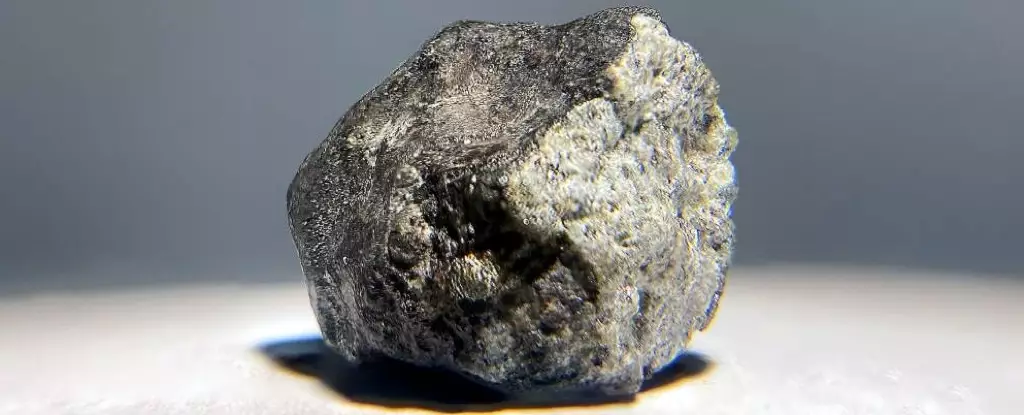For centuries, meteorites have intrigued scientists and laypeople alike, offering fragile glimpses into the cosmos. Traditionally, only a fraction of these celestial rocks could be traced back to their origins, making it a daunting task to create a comprehensive understanding of their impact on Earth. However, recent investigative studies led by an eclectic team from renowned institutions such as the French National Centre for Scientific Research and Charles University in the Czech Republic have revolutionized our grasp of meteorite provenance. Now, more than 90 percent of meteorites can be confidently linked to specific parent asteroids, shedding light on a subject that has long remained ambiguous.
Among the most commonly encountered meteorites are H (high iron) and L (low iron) chondrites, which represent roughly 70 percent of all meteorites that enter our atmosphere. The name derives from their composition—primarily composed of small spherical particles known as chondrules that formed through rapid cooling of molten materials. What makes these meteorites particularly compelling is the geological narrative they carry, leading researchers to probe deeper into their origins.
As explored in these recent studies, the focus on H and L chondrites unveiled fascinating connections to specific asteroid families located in the main asteroid belt, specifically, the Massalia, Karin, and Koronis families. These families are thought to be the result of past large-scale collisions within the belt—a catalyst for the generation of fragments that ultimately fall to Earth.
The studies have yielded dates for significant collisions within these asteroid families, ranging from an event 466 million years ago in the Massalia family to more recent collisions approximately 5.8 million and 7.6 million years ago within the Karin and Koronis groups. These timeframes not only establish a timeline of celestial events but also unveil a pattern of asteroid fragmentation that explains the influx of meteorites on our planet today. The presence of associated dust bands and varying cosmic-ray exposure ages of meteorites serve as corroborative evidence, reinforcing the idea of a dynamic and tumultuous history among these asteroids.
The implications of these findings extend well beyond the realm of meteorite studies. They suggest that many of the meteorites currently colliding with Earth originated from fewer asteroid families than previously assumed, indicating a tighter connection among these celestial bodies. Additionally, the relatively recent nature of these collisions implies that the fragments we observe today are part of a more ongoing and recent cosmic reshuffling.
In an effort to explore the diversity of meteorites further, researchers did not confine their study to only common H and L chondrites. They extended their analysis to include less common types, thereby boosting the overall number of meteorites accounted for beyond the initial 90 percent mark. Families such as Veritas, Polana, and Eos were also dissected for insights into their less frequent meteorites. This exhaustive approach not only portrays the complexity and variability of meteorites but also enhances the overall ecosystem of knowledge concerning asteroid families.
As we stand on the precipice of new discoveries, the ongoing research into meteorites marks an essential chapter in our understanding of the Solar System’s formation and evolution. The findings gleaned from these studies not only inform current astronomical understanding but can also serve as a guide for predicting future paths of asteroids and meteorites.
The ambition and commitment of the research teams to continue observing and cataloging all types of meteorites signify a promising future, one where the cosmic narrative can be pieced together more thoroughly. Each meteorite tells a story—a fragment of history, mirroring the ancient and ongoing processes that shape our solar neighborhood. Indeed, the pursuit of knowledge about the origins, impacts, and trajectories of these stunning celestial artifacts remains a pressing frontier in both astronomy and planetary science.

